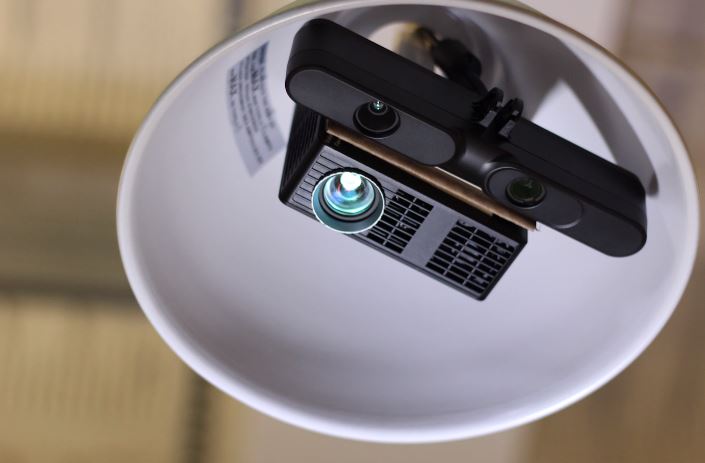The Future Interfaces Group, a research lab within the Human-Computer Interaction Institute at Carnegie Mellon University, is developing an augmented reality (AR) device to provide more functionality to any kind of surface. It can be used with any unmodified desk as long as you have a standard light bulb socket available.
Desktopography uses a small projector, a depth sensor, and a computer to project images onto surfaces. Plug the device into a light socket and it creates a projection similar to a smartphone device. However, it is not as simple as a smartphone or a projector, as the device detects objects that obstruct the view, and automatically moves the digital applications so you can view them on the surface. It also allows applications to snap to specific objects – such as the laptop shown in the video below—so they follow the object if moved around.
Lead researcher and graduate student Robert Xiao said, “it’s about trying to break interaction out from our screens and our devices, where they’re separated from reality, and a separate world, really … and try to merge those onto our environment.”
Though Desktopography seems unique, there already are other companies working on similar solutions. Lampix offers a similar product that, although not as portable and still in beta phase, seems to provide even more functionality. While the Desktopography works with digital apps, Lampix’s product can, for example, recognize and allow interaction with physical objects, and scan texts and images directly to a computer.
When many AR products require the use of a smartphone or headset, it’s nice to see solutions like these to keep it clean and simple. However, it’s not clear how these solutions fit in the industry, and how companies can take advantage of it – especially as projections aren’t as clear as a normal screen in different lighting conditions.
The Future Interfaces Group thinks the Desktopography needs five more years before it is commercialized.






